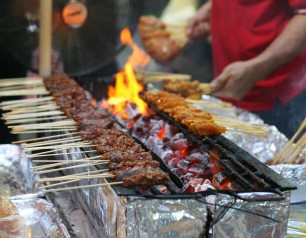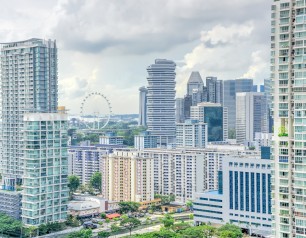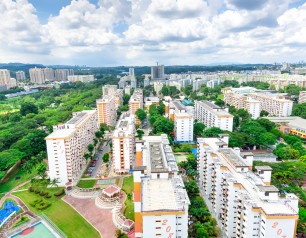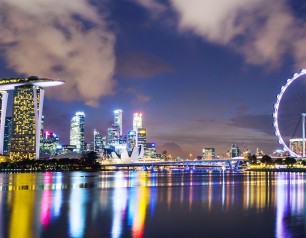Geylang: It's past and present
What comes to mind when you hear the word “Geylang”? For many people who grew up in the area, it’s the food, the traditional side of what Geylang is famously known for, or just the breathtaking architecture, such as the Sri Sivan Temple? Geylang, formed by the boundaries of Sims Avenue, Paya Lebar Road, Guillemard Road and Mountbatten Road, also houses Singapore’s oldest Malay Settlement: Geylang Serai (then known as Kampong Melayu).
The word, Geylang has many different suggested origins. Some say it was Gaylang, or Gelang (anklet in Malay) In an 1849 map, there are mentions of Gaylang village and Pulo Gelang (Geylang Island), which vanished with the land-fills and reclamation of the Kallang Basin. The 1849 map also shows the presence of a large coconut plantation, where the word Kelapa (coconut in Malay) could have come from. Another suggestion is that ‘Geylang’ originated from a corruption of the Malay ‘kilang’- press, mill or factory , which could be referred to the multiple presses and mills in the coconut plantations.
Geylang, originally known as Geylang Kelapa, established in the early 1840s by the British Government, who dispersed the Malay floating village at the mouth of the Singapore River. The Orang Laut (sea nomads), and the Malays then resettled along Kallang and Geylang Rivers, which flowed into a common bay, now known as Kallang Basin. In the tired and worn veneer that Geylang wears, you will find that Geylang does have a lot more to offer.
Due to the demand of lemongrass, used as an antiseptic cure for rheumatism, the lemongrass oil, also known as citronella oil, was also used in the manufacturing of soap and scents where the name of the Malay Settlement, Geylang Serai (Kilang Serai), is therefore said to be derived from. During World War 2, much of the area was used for the cultivation of tapioca. However, after the large number of people who moved into Geylang, it was stamped as an infamous red-light district, due to the number of brothels set up in the area.
In the pre-independence period, Geylang expanded and was separated by the Geylang River. The eastern part was dubbed “Geylang Serai”, which housed the Malays and Peranakans who still resided in traditional houses, where the iconic Peranakan houses that are still seen today. The western area was divided into a series of lanes termed “Lorong”, which mainly inhabited the chinese, where Chinese shops, which sold several goods and services ranging from jewelry to pawn shops. were set up along Geylang and Kallang Rivers. This separation has built up it’s culture, where traditional style houses can still be seen, and food stalls at every nook and cranny, where Geylang came to be known as “Home to the King of Fruits”.
Not only that, Geylang had set up a name for itself as a popular entertainment district, where the Happy World Amusement Park (later known as the Gay World) was set up in the 1930s, which had still continued functioning even in the Japanese Occupation. It was, however, shut down in the 1970s.
Nowadays, Geylang has come to be known to be home to many well-visited food places, such as the Sin Huat Seafood Restaurant, where the Sri Lankan crab bee hoon (prepared one dish at a time) is renowned for there. The “Home of the King of Fruits”, better known as the durian, is shown in the many fruit stalls in every street in the district. Another thing it is widely known for, is the building structures. Peranakan and other traditional-style bungalows, can still be found in Geylang, and the one building structure, which has survived until today, and is still apparent in and around the area is the ample sprinkling of places to perhaps seek salvation in and support of the spiritual needs of Geylang's growing population - the mosques, temples and churches. One good example, is the Masjid Khadijah, a good example of good example of a late 19th century hybridisation between the neo-Classical styles that were becoming popular amongst the Indian Muslim community and the traditional Malay Mosque that has a pitched roof as its central feature. Of particular note are the elegant arches around the main prayer hall, and the delicate moulded plaster work throughout.
Whatever its reputation, Geylang is now a highly developed area loaded with eateries, convenience stores, a sports centre, and relatively fast access to the CBD (about a six minute drive). It’s also serviced by several MRT stations, which enables convenience for Geylang’s residents to travel to other parts of the country with ease.





